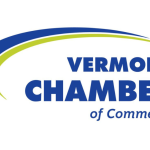Education Finance Reform and Property Tax Yield: Implications for Vermont Employers
The Vermont Legislature continues to advance two key pieces of education finance legislation: H.454, a comprehensive education finance reform bill, and H.491, the annual yield bill that sets property tax rates.
The Vermont Chamber provided testimony to the Senate Finance Committee on H.454, emphasizing that reforms must enhance Vermont’s economic competitiveness and avoid increasing cost pressures on employers. While the Vermont Chamber supports the goal of equitable education funding, concerns remain that proposed changes could increase tax complexity, reduce predictability, and add to the financial burden on job creators already navigating workforce shortages and inflation.
One significant area of concern in H.454 is the proposed shift from two to four property tax classifications: Homestead, Nonresidential, Residential, and Apartment. The Vermont Chamber has strongly urged lawmakers to maintain a unified Nonhomestead category, citing the risk of disproportionate tax hikes on commercial properties and added administrative burdens. With Vermont already ranked highest in the nation for per capita property tax burden, the proposed classification changes could have long-term consequences for business investment and affordability.
In Senate Education, the Agency of Education presented details on an “Enhanced Evidence-Based Model” for implementing the foundation formula, with a proposed FY25 funding level of $1.77 billion approximately 6% lower than current levels. The model would reallocate funds to categorical aid and implement a multi-year transition period (FY27–FY31), including phased increases for gaining districts and gradual reductions for those seeing decreases. However, modeling for these changes has not yet been shared with the Joint Fiscal Office, limiting the Legislature’s ability to fully evaluate fiscal impacts.
Meanwhile, the Senate Finance Committee also weighed decisions on H.491, the yield bill. The bill proposes using $77 million in General Fund revenue and $42 million in Education Fund debt to reduce the projected property tax increase. Lawmakers debated whether to apply the full buy-down to provide immediate taxpayer relief or reserve a portion to offset future rate hikes. With some districts seeing up to 20% increases in recent years, many supported full use of available funds this year. The Senate Finance Committee ultimately advanced the House-passed version of the bill, which includes the full $77 million buy-down in a vote of 6-1-0.
As these critical conversations continue, the Vermont Chamber remains engaged to ensure that education finance reform achieves long-term stability and equity without compromising affordability or economic growth.






